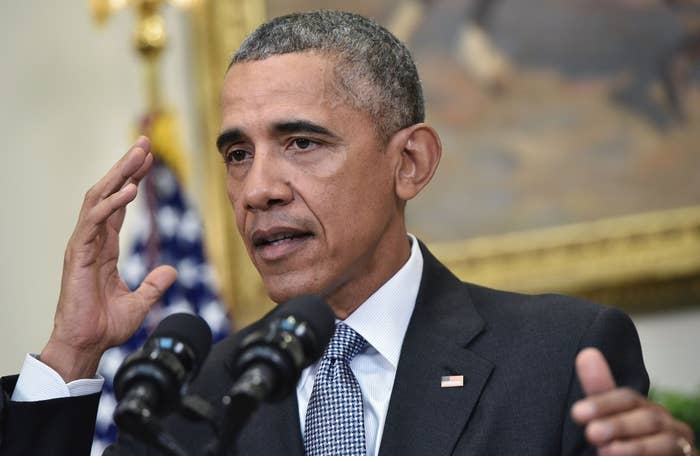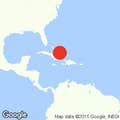
President Obama on Tuesday unveiled a plan to close the detention facility at Guantanamo Bay, Cuba, making a moral, economic, and strategic case for a long-delayed campaign promise that is likely to be opposed by the Republican Congress.
“This is about closing a chapter in our history,” Obama said at a press conference in the White House. “It reflects the lessons that we’ve learned since 9/11.”
The plan recommends moving the 35 of the 91 remaining detainees to other countries and the rest to U.S. soil, but does not formally endorse an alternative detention facility. The question of where to put the prisoners is certain to prove contentious during an election year, as Republican leaders have long opposed bringing suspected terrorists to domestic prisons.
Obama did not respond to shouted questions from reporters who asked whether he would consider using executive action to close the prison without legislative support. Two senior administration officials who spoke with reporters on background ahead of the president’s remarks declined to answer similar questions.
The proposal comes seven years after Obama, then an insurgent candidate for the Democratic nomination, first promised to close the facility. The president acknowledged that history in his remarks, recalling that both President Bush and Senator John McCain — his rival in the 2008 election — supported closing the prison before the facility became “ a partisan issue.”
“For many years it has been clear that the detention facility at Guantanamo Bay does not advance our national security,” Obama said. “This is not just my opinion. This is the opinion of experts and the opinion of many in our military.”
Outlining his reasons to close the prison, Obama said the facility gives terrorist groups a propaganda tool to recruit new operatives and that maintaining the facility is costly. But his main argument appeared to be a moral one.
“As Americans we pride ourselves as being a beacon to other nations — a model of the rule of law,” Obama said. “But 15 years after the worst terrorist attacks in American history, we are still having to defend the existence of a facility and a process when not a single verdict has been reached in those attacks.”
The president emphasized that many convicted and suspected terrorists are already detained in the United States, adding that civilian federal courts have proven capable of prosecuting and convicting such people as Dzhokhar Tsarnaev, the Boston Marathon bomber, and Richard Reid, the so-called “Shoe Bomber.”
“We can capture terrorists, protect the American people, and when done right, we can try them and put them in our maximum security prisons, and it works just fine,” Obama said.
In a statement released shortly before the president’s remarks, Pentagon Press Secretary Peter Cook outlined the specifics of the plan, which he said would involve four main goals:
- Transferring the 35 detainees who have already been approved for movement to foreign countries.
- Continuing to review the cases of the 65 remaining detainees to see if they are eligible for transfer or release.
- Finding dispositions for the legal cases of prisoners detained under the law of war, whether in military commissions or civilian courts in the U.S
- Working with Congress to find a location in the U.S. to house the detainees who cannot be transferred to foreign countries or are subject to military commission proceedings.
The two administration officials who spoke with reporters said the plan would save money by reducing the number of personnel stationed at the base, where nearly 2,000 guards tend to less than 100 prisoners.
“We can do this more cheaply in the United States than in Guantanamo Bay,” one official said. “We estimate that, in our annual recurring costs, in the United States, we could do it between $65 and $85 million dollars cheaper at a U.S. facility, and we could therefore offset the one-time transition cost within three to five years.”
The officials also said that the Obama administration has surveyed several current facilities in the U.S., but they declined to name the sites or make a formal recommendation on which of those facilities is the most viable option.
“We put together cost estimates, but I want to underscore that these are somewhat rough,” one of the officials said. “Congress has prevented us from doing precise design and planning work on a facility in the continental United States that prevented us from coming up with the fidelity needed for either a budget estimate to ask Congress for the authority or even precise estimates of what the sites would cost.”
The officials emphasized the purpose of the newly-released plan is to work with Congress — where the administration has traditionally met fierce opposition on Guantanamo’s closure — to shutter the prison and move detainees to U.S. soil.
“We hope that this will be the beginning of a more sustained conversation in which we articulate some of the thinking behind it,” one of the officials said. “We’re not entirely clear on how that conversation will play out, but we’re committed to moving it forward.”
Related coverage from BuzzFeed News:
Correction: The administration intends to release 35 cleared detainees to third-party countries in the coming months, not 31.



